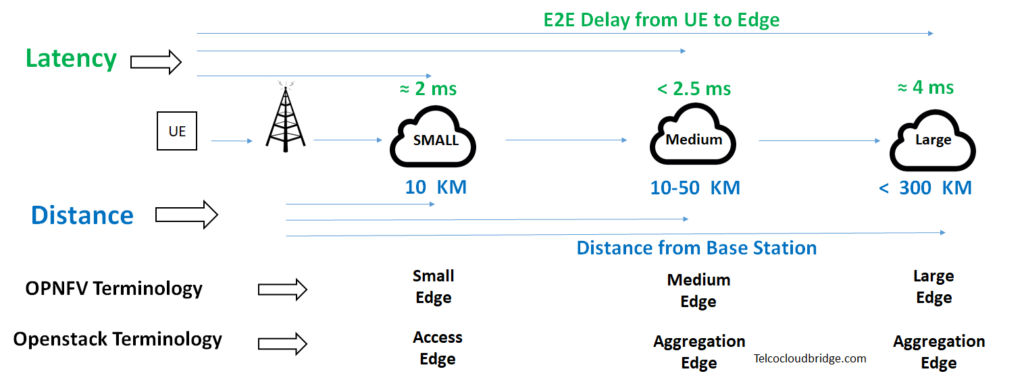“Where are edge data centers located ?” This is the first question that any edge computing seeker asks
and “what is the latency threshold for each edge data center” is the second that comes to mind
Therefore, this blog answers these questions in easy to understand manner.
I do see a lot of confusion with the naming and the latency when it comes to edge computing
For example, there are as many names for edge data centers as there are types. We haven’t heard such names for the traditional data center:
Near-edge, far-edge, deep-edge…..etc.. you name it and you will find the type
Don’t get confused by them. A lot of them are just the marketing terms coming from the edge computing vendors. So really does not matter.
In fact, Edge can be anywhere ( between centralized data centers and users), it can be at the customer site, at a base station site, one hop away, two hops away, etc
However, I do think that everyone needs some reference and benchmark.
So I will use two sources: OPNFV and OpenStack foundation and show latencies and locations from these sources
Just one point, the E2E latency is one way and not two way and I have explained it well in this article on how many people get confused with one way and two-way latency.
The official documentation for OPNFV defines E2E delay as following
“The time of the transmission process between the user equipment and the edge cloud site. It contains four parts: time of radio transmission, time of optical fiber transmission, time of GW forwarding, and time of VM forwarding”
Few things you should note are that OPNFV and Openstack use different terms for the same data centers
Let’s go one by one
Where are Edge data centers located?

Small Edge / Access Edge –
Small edge data center is closest to the base station.
- Latency from UE to the site is around 2 ms
- Distance from cell site to edge site is around 10 KM
- The maximum bandwidth it can provide is 50Gb/s
- Services that can be deployed here have very low latency requirements.
It is possible to use this site without virtualization using just bare-metal
Medium Edge / Aggregation Edge
This is larger than access edge and can also serve as an aggregation site of multiple access sites.
- Latency from UE to the site is around 2.5 ms
- Distance from cell site to edge site is around 50 KM
- The maximum bandwidth it can provide is 100Gb/s
It is possible to use bare-metal as well as VMs/containers
Large Edge/Aggregation Edge
This has a larger capacity than the medium edge and further way at a distance of 80 to 300 KM, this can also serve as an aggregation layer.
- Latency from UE to the site is around 4 ms
- Distance from cell site to edge site is around 80-300 KM
- The maximum bandwidth it can provide is 200Gb/s
It is always virtualized using VMs or containers or both
What are the other locations of edge data centers?
Edge data centers can also be located right at the base station, called tower edge, or on the customer premises, the on-premises data center are owned by the enterprises themselves.
What is the best location for an edge data center?
It depends on the latency requirements and the need for reducing the backhaul bandwidth. There is no one-size-fits-all location. It can be within the premises of the customer, at the tower, one hop away or two hops away depending on the application latency requirements.
For telco edge cases, some guidance can be obtained from OPNFV here
CDN – 10 ms
enterprise vCPE -50 ms
5G-UPF 10 ms
MEC uRLLC < 3 ms
eMBB < 10 ms
CRAN-CU 3ms
Note that the CDN’s ( content delivery network) latency is not that strict and the motivation of its deployment may be mainly reducing the backhaul transport rather than reduction of latency.
